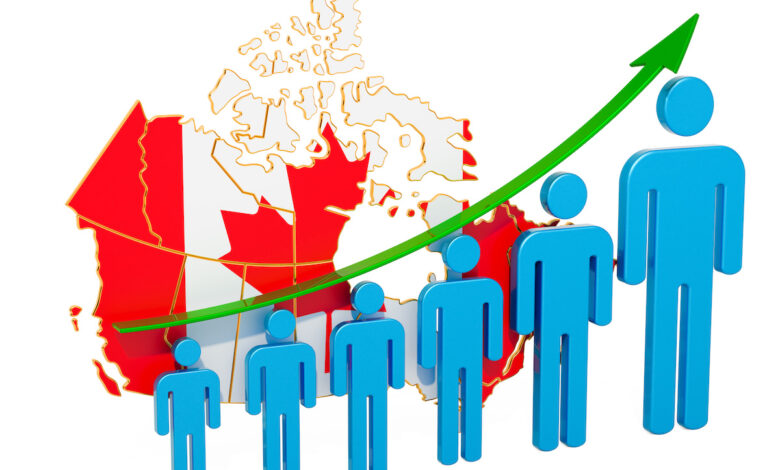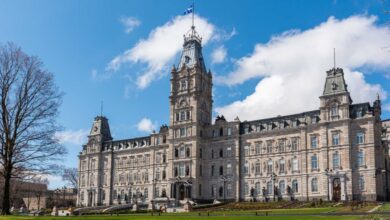Canada’s population reaches 40 million fueled by immigration

Canada’s population has passed 40 million, fueled by immigration, the latest figures from Statistics Canada show.
“This is an exciting milestone for Canada,” said Anil Arora, Chief Statistician for Statistics Canada.
“It is a strong signal that Canada remains a dynamic and welcoming country, full of potential. As we approach Canada Day, this is certainly cause for celebration!”
Canada is countering the trend of population decline in the G7 with the fastest population growth, 2.7 percent, among those countries.
That’s also Canada’s fastest population growth since 1957, when immigration and the arrival of the baby boomers pushed the country’s population up by 3.3 percent.
Read more Canada immigration news
Canada offers immigration and citizenship document exemptions to wildfire victims
How to Immigrate to Nova Scotia as a Truck Driver
Alberta invites nearly 600 candidates in seven recent Express Entry Draws
“As we reach 40 million Canadians, the future of our population depends on the decisions we make today,” Statistics Canada notes on its website.
“If current immigration levels remain at the same level, Canada’s population could reach the 50 million mark by 2043. That’s in just 20 years. In comparison, it took 26 years to go from 30 to 40 million.
The Bureau of Statistical and Demographic Services estimates that by 2041, two in five Canadians could be born abroad, which would be a record.
Canada is optimistic about immigration.
In his Immigration Level Plan 2023-2025, Ottawa has set its 2023 immigration target at 465,000 new permanent residents. The country will welcome 485,000 new permanent residents in 2024 and another 500,000 in 2025. That totals 1.45 million immigrants to Canada over the next three years.
Immigration Secretary Sean Fraser has kicked off a national research tour to find out what Canadians think of the country’s immigration policy.
That initiative is dubbed An immigration system for Canada’s future.
“Immigration is critical to Canada’s long-term success and we must ensure that our policies and programs are aligned with the needs of our communities,” said Fraser.
“That is why the Government of Canada is launching this large-scale engagement initiative, which offers a broad range of stakeholders and Canadians the opportunity to share their ideas and perspectives on how we can build a stronger, more adaptive immigration system for Canada’s future. .”
Watch video
Through this engagement initiative, Immigration, Refugees and Citizenship Canada (IRCC) conducted face-to-face dialogue sessions across the country, thematic workshops, and conducted a survey for the public and its clients.
Those interested in contributing to the future of Canada’s immigration system could respond to an online survey, available from March, in addition to stakeholder dialogue sessions and thematic workshops.
Last year, IRCC data shows that Canada welcomed 437,120 new permanent residents.
Immigration is responsible for nearly all of Canada’s labor force growth, with more than 75 percent of Canada’s population growth coming from immigration, primarily in the economic category.
This increase in immigration is seen by many as essential to ensuring that Canada can solve its severe labor shortage and help employers fill vacancies left vacant by a lack of suitable candidates.
Pros and cons of Canada’s current immigration levels debated by politicians
But as inflation picked up in the middle of last year, others expressed concern that Canada’s immigration level was so high it was fueling immigration and straining the country’s social safety net and infrastructure.
One of the most outspoken advocates for lower immigration levels was Maxime Bernier, leader of the People’s Party of Canada (PPC), who ran this week for a seat in the House of Commons in Manitoba’s midterm elections. He said Ottawa’s ambitious immigration targets for years to come are simply not sustainable.
“It’s mass immigration,” the fledgling right-wing party’s leader said in a Rebel News report. “Yes, we need to have sustainable immigration, but we believe we need to have lower immigration than that number.”
In the last federal election, the PPC received 4.9 percent of the vote and failed to elect a single candidate for the House of Commons. The party regularly polls for less than five percent of popular support.
But concerns remain about Canada’s immigration rates and how the country can provide an adequate level of settlement services to all newcomers.
In the French-speaking province of Quebec, provincial Immigration Minister Christine Fréchette has told Ottawa that the province will not accept significantly more immigrants in the coming years.
“It is up to Quebec to set its own permanent immigration goals,” she tweeted in French. “The upper limit for Quebec is now 50,000 (new permanent residents) because of our capacity to welcome, provide French-language services and integrate them.”
Canada is arguably a nation of immigrants. By 2021, more than 8.3 million people, or 23 percent of the population, are or had been land immigrants or permanent residents of Canada.




